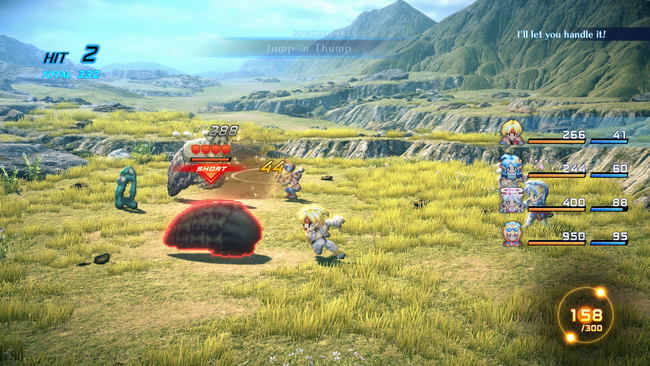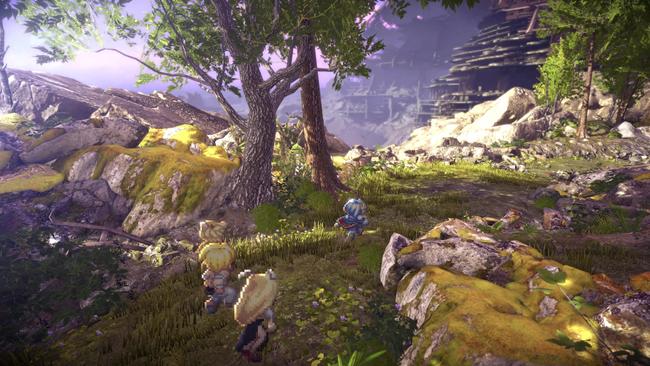
“There's been a real rediscovery of its beauty” - Star Ocean: The Second Story R’s developers talk the great Pixel Art Revival
In the nineties, Squaresoft became famed for its cutting-edge visuals, largely driven by its use of pre-rendered CG. But in 2023, arguably the most progressive visual style the company is championing is a return to history - the great pixel art revival.
The latest title to push this boxy, rough-edged agenda is Star Ocean: The Second Story R. While the combination of hand-drawn 2D sprite work and 3D backgrounds is one that might give the impression that Star Ocean 2’s remake is following in the footsteps of HD-2D games like Octopath Traveler, the team behind the game is actually insistent that HD-2D did not factor into their thinking.
“I have to say that HD-2D games were not really what we had in mind when we started development,” The Second Story R director Yuichiro Kitao tells RPG Site when Square’s other modern pixel-driven games are mentioned “We were really just approaching this from the perspective of ‘how do we take the PS1 version of Star Ocean 2, and translate that into something that new, more modern players are really going to find appealing?’
“We went through iteration to end up with 3D backgrounds and 2D pixel characters. Obviously there are loads of really great HD-2D games out there; they're absolutely fantastic and really fun to play. But we weren't aiming to sort of emulate that style as we approached this game."

Ultimately, it's a different technology, and a different starting point. The result is different too - The Second Story R feels more dynamic than the 2D-HD titles, elevated by its 3D world, which is lush in its presentation.
In a sense, the 3D backgrounds serve to modernize the game - while the 2D sprites act as an anchor to ground it in Star Ocean’s past - and as a lightning rod of nostalgia that’s meant to appeal not only to those who remember the nineties - but also those who have a second-hand love for this era that they weren’t alive to experience.
“There's been a real rediscovery of its beauty - of the beauty of pixel art - and for that graphical style in general,” says Kei Komaki, the producer of Star Ocean 2’s remake at Square Enix.
“Maybe these kinds of 2D games are a really good vehicle for telling the story-driven and party-focused narrative,” Komaki suggests, “because it allows the player to to build up the details and expand on what's there with their imagination.”
“If you have a 3D game that’s more realistic and fills in those details for you, it’s not necessarily as easy to have that experience. So I think maybe that’s something that contributes to the popularity of these sort of retro RPGs these days.
“It’s not that I don’t like 3D games - and there’s lots I could mention, but I won’t because they’re from other companies!” Komaki adds, with a laugh.

For Kitao, the thinking is similar. A tri-Ace veteran, Kitao now heads up independent Japanese studio Gemdrops - the development house Square Enix contracted to remake Star Ocean 2. Gemdrops isn’t exactly unfamiliar with the retro RPG craze - the company has even been involved in the Japanese release of the western-developed, retro-inspired indie revival Sea of Stars.
“Personally I really welcome this trend - I think it's great,” Kitao says. “In the 90s I was playing these games on the SNES; I was playing Final Fantasies, I was playing Tactics Ogre, Ogre Battle, I was playing the Tales of series... So I have a lot of memories of these kinds of games and I'm really happy to see this revival on a personal level.”
While Kitao’s experience is that of an older fan, he’s also quick to note that those people who were around in the nineties are only part of the potential pool of people games like Star Ocean: The Second Story R can appeal to.
“For the younger players as well, say those in their teens and twenties, they actually sometimes find these pixel graphics, these little sprites, more new and fresh,” Kitao notes. “By the time they were born and they were playing games, polygons were already the done thing. These days even Pokémon is in 3D.
“So I think that's why you have games like Undertale that really take these pixel graphics to the forefront and then feel really new and fresh in what they're doing with them, particularly to a younger audience.”
All of this contributes to what Kitao calls an ongoing trend of older-style games having a surge in popularity. Here on RPG Site, we’ve seen this extensively - perhaps because this wave of retro-modern titles is fairly dominated by the role-playing genre, especially in terms of games that resemble the golden-age of Japanese-made, console-based RPGs. This is something The Second Story R’s developers see, too - and it presents an opportunity for the game.
“One of the things, and I think that it's something that is very key to these kinds of older RPGs, is that not only do they have a real focus on the story and the narrative side, but there's a lot of different battle styles that are really refined,” Kitao hypothesizes.

“There's you know, the command battles, the turn-based battles, there's more sort of real time strategy elements. There's these more action elements in there. There's a lot of really unique systems that are in these games that can be really interesting to explore.
“Then more than anything, there's this idea of having a party, having characters that you're going out and you're exploring with and you're fighting with. I think that this kind of idea of being with friends really matches the RPG as a genre. That's something that people have really connected with, including younger players.
“And not just younger players - for us, now we're adults, we're a bit older... we can look back and think, oh yeah, I remember what it was like when I went out with you know, three or four of my friends and we went and we just climbed that mountain. We ran around where we weren't supposed to be. Just those kinds of things where we had our own adventures and I think in a certain sense, it does capture that feeling too.”
This is the feeling that Star Ocean: The Second Story R aims to capture. Even though this is a game with more action-focused battles, it’s still a classic RPG through-and-through - and in terms of adventuring with friends, there’s a lot to choose from, with a huge number of recruitable characters. Pretty, expansive, and reverent to the past in all the right ways, The Second Story R understands and leverages its history in the smartest possible way.
No matter if the nostalgia held is for your childhood or for a bygone era you missed, the development team hope it successfully presses your buttons.
“There’s going to be more of a sense of nostalgia,” Kitao concludes, “We hope that people with that nostalgia will respond positively to the game.”
Star Ocean: The Second Story R is out now for PlayStation, Switch, and PC. If you’re on the fence, check out our 9/10 review for the game. If you're already playing, our comprehensive The Second Story R guides section will help you in your adventure.